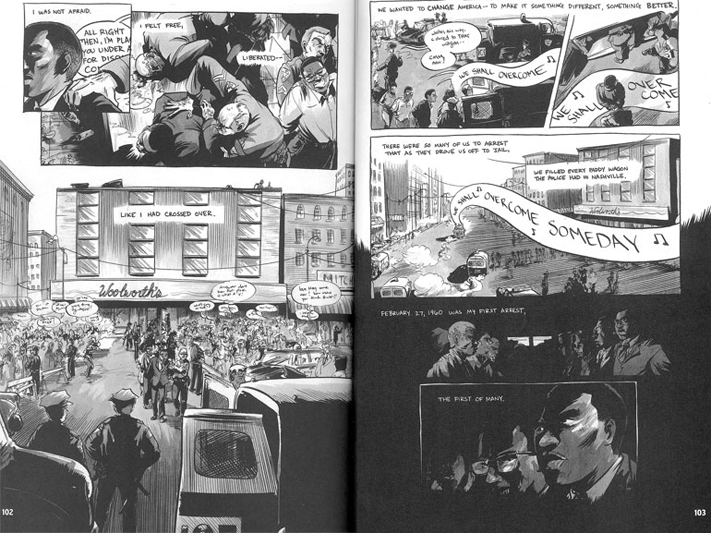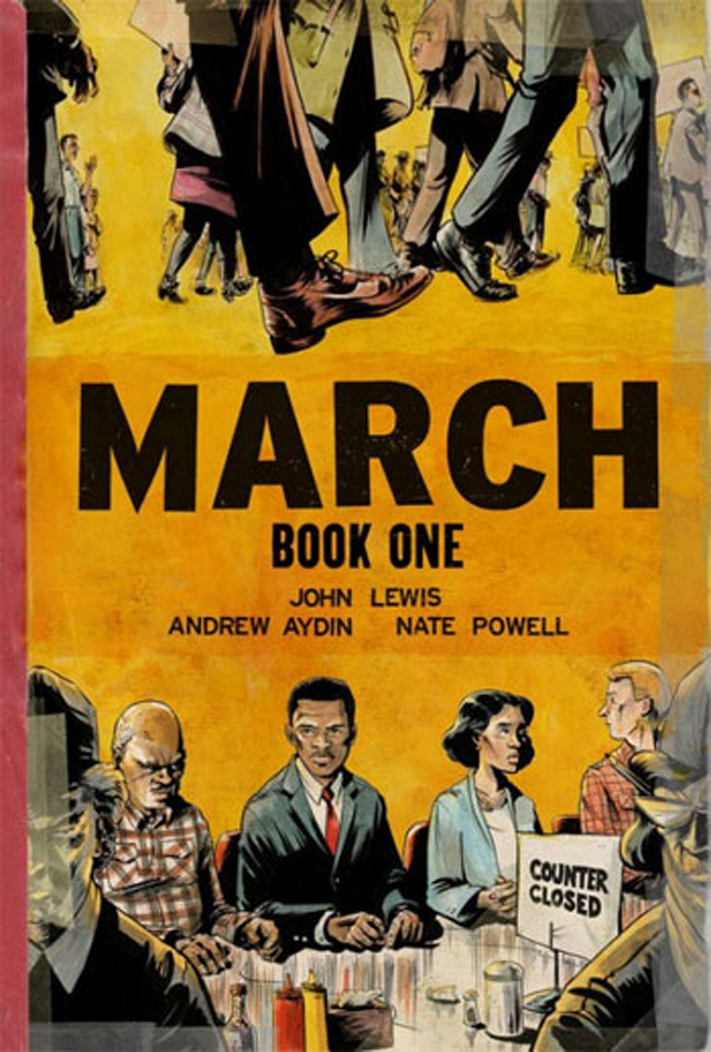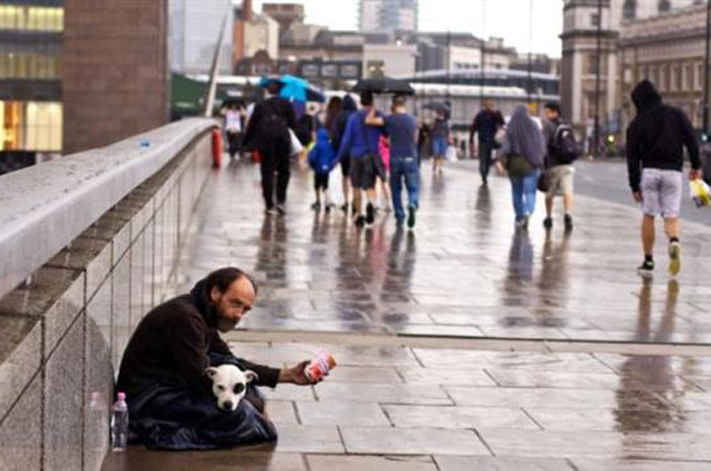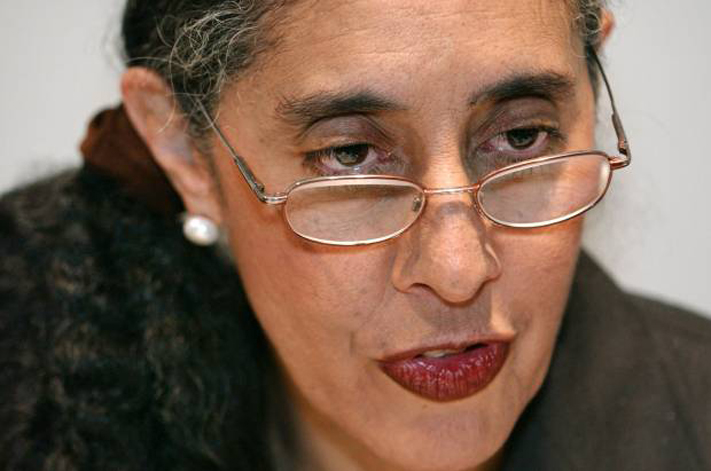Project Description
In the tradition of “Maus” and “Persepolis,” “March” tells the story of young African Americans who, like its author, rose up from the Jim Crow South to assert their human rights.
Cut to January 20, 2009, Washington, D.C., a few hours before the inauguration of America’s first black president. Two young African American boys visit the office of revered civil rights leader and thirteen-term representative, Congressman John Lewis. “I wanted my boys to see their history,” says their mother, explaining the unscheduled visit. “I wanted them to see how far we’ve come.”
Far indeed, as shown in the graphic novel March , illustrated by Nate Powell and co-written by Andrew Aydin and John Lewis. Both historical account and memoir, March does a great service by making the story of the civil rights movement engaging and inspiring for a new generation of Americans. Each historical moment—young Lewis discovering the economic realities of school segregation, or hearing Martin Luther King Jr. on the radio for the first time—is also a personal memory, a moment in the coming-of-age story of a young man.
Lewis was a Freedom Rider at the age of 20, one of the movement’s bravest activists in nonviolent resistance to vicious segregation and mob violence. As chairman of the SNCC (Student Nonviolent Coordinating Committee) he organized black voter registration campaigns, contending with white hostility and reprisals. How did a boy from the farm go that far, that quickly?
March gives us some insight into the background of the young African Americans who, like Lewis, rose up from the Jim Crow South to assert their human rights. We see Lewis as a sensitive and aware teenager who, searching for escape from extreme oppression, finds a path of resistance instead.
The story takes us back to 1940s Alabama, where, as a child, Lewis would play truant from farm work to sneak off to school.
Then we roll forward briskly through movement history: Brown v. Board of Education, the Montgomery Bus Boycott, racist terror, nonviolence training, lunch counter sit-ins, strategy debate, arrest, jail, and—finally—desegregation.

Illustrations from March (Book One).
Walk through a gallery of John Lewis’ work…Civil Rights Icon Makes a Comic of His Own
Using sudden jumps in time and setting to tell a story that develops over years and miles is something graphic novels do with ease. So is using the universal, visual language of cinema—the long shot, the close-up, the scene half in shadow. Nate Powell’s design and drawing in March use these conventions particularly well, aided by the admirably concise yet informative text.
True to its genre, March shows as much as it tells—the blows on Edmund Pettus Bridge are rendered in comic book “whaps,” “kraks,” and “thuds.” But like the best graphic novels with social and political themes (Maus, Palestine, and Persepolis, for example), March balances its popular-culture format with the moral expectations of reporting abuses and triumphs in the struggle for human rights.
The authors planned March as a trilogy from the beginning. Once completed by the publication of books two and three, March looks likely to be a graphic epic, a classic account of one of our defining national issues and eras.
In 1958, The Fellowship of Reconciliation published Martin Luther King and the Montgomery Story, a comic book that introduced young would-be civil rights activists to the basic philosophy and strategy of nonviolence.
March gives that comic a cameo role—a nod to its cultural antecedents. It’s a worthy lineage. But March is not a history lesson or organizational tool disguised as a comic book. It is, instead, a widely accessible work of narrative art about real events—exciting, immediate, and deeply moving.
Valerie Schloredt wrote this article for Education Uprising, the Spring 2014 issue of YES! Magazine. Valerie is associate editor of YES! Magazine.
YES! is nonprofit and relies on reader support. Click here to show your support for Yes! Magazine – keep the inspiration coming.
Read Related John Lewis; March: Book One











